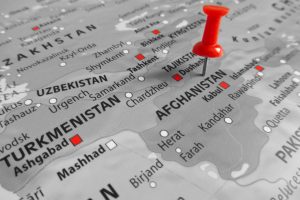“… [I]t is no longer a question of whether the Taliban are diverting assistance from our programs to help the Afghan people, but rather how much they are diverting,” writes the U.S. Special Inspector for Afghanistan Reconstruction (SIGAR) John F. Sopko in the introduction to its 60th quarterly report, published this week.
The report highlights findings in an analysis prepared by the United States Institute of Peace (USIP) for USAID and shared with SIGAR, which noted that “According to multiple U.N. officials across different agencies, the Taliban have effectively infiltrated and influenced most U.N.-managed assistance programming.”
Most donor funding is routed through the United Nations system. The Taliban, according to the USIP analysis, are “pushing for ever-increasing degrees of credit and control over the delivery of aid.” This, in turn, fuels a further consolidation of power.
“Humanitarian organizations have faced an ethical dilemma in Afghanistan under Taliban rule, recognizing that withdrawal of aid due to the Taliban’s restrictive governance would leave millions of Afghans without life-saving resources,” SIGAR writes.
That ethical dilemma is unlikely to become easier to navigate with time. SIGAR notes in the report the continued rollout of increasingly restrictive policies from the Taliban government, such as the ban on women working with NGOs. SIGAR points out, however, that according to USAID’s Bureau for Humanitarian Assistance (BHA), enforcement of such restrictions varies geographically.
“BHA reports that many implementing partners have secured provincial and local-level exemptions to the ban, but these exemptions remain fragile and limited in scope, and are often conditional on stipulations such as the requirement that a male guardian accompany female field staff.”
It seems almost obvious that restrictive dictates issued from on high invariably get watered down by local interests, or are not necessarily implemented in the same way in every corner of Afghanistan. At the same time, this tells us something about the Taliban’s ability to control implementation and every tendril of its organization. It also, in my view, hints at future areas of friction should the center — technically Kabul but really Kandahar, where Mullah Hibatullah Akhundzada resides — decide to push local Taliban to more faithfully enforce rules and restrictions that just don’t jive with local norms.
And there are reasons to assume that time will eventually arrive. SIGAR — and the USIP analysis — use the phrase “infiltrated” to characterize a part of the Taliban’s approach to receiving foreign aid.
The Taliban will “accept foreign funded and provided goods and services as long as they are delivered in a suitably low-profile, apolitical fashion, and with immediate tangible benefit,” according to the USIP analysis cited by SIGAR. The analysis also states that “the Taliban appear to view the U.N. system as yet another revenue stream, one which their movement will seek to monopolize and centralize control over.”
Here the Taliban exploit the good intentions of the U.N. and other donors: The donors’ main interest is getting aid, whatever aid they can, to the desperately needy people of Afghanistan. If that means doing it quietly, then it is done as USIP suggests in a “suitably low-profile, apolitical fashion…” The Taliban, however, have an interest in being seen as providing what Afghans need. It serves to bolster their reputation domestically, regionally, and — they hope — internationally.
But it’s an unsustainable situation: As the Taliban consolidate control, the central leadership’s restrictive policies may see increasing implementation and that could bring to the forefront friction between local Taliban cadres, who are able to get along bending certain rules to local norms, and the core Taliban, whose ideology remains extreme.
In that vein, SIGAR notes that “Taliban interference with NGO work escalated, leading to a steady decline in humanitarian access in 2023, with a 32% increase in incidents between January and May 2023 as compared to the same period in 2022.”
There’s no easy answer here, either. As Hassan Abbas told me recently when asked about one of the more controversial conclusions of his new book, “The Return of the Taliban: Afghanistan after the Americans Left” — that the international community needs to increase, not decrease, its engagement with the Taliban — “Getting into another warlike situation with the Taliban is unlikely to improve the plight of ordinary Afghans or the nature of Afghanistan’s reality today.” Even if engagement doesn’t work, Abbas said the international community has to try. “Even if at some point hard tactics and strong sanctions are opted for, we at least need to be able to say that we tried our best to offer peacebuilding opportunities and a constructive approach to Afghanistan.”
Returning to SIGAR, its mandate is to promote “efficiency and effectiveness” of U.S.-funded reconstruction programs in Afghanistan, and to “detect and prevent waste, fraud, and abuse of taxpayer dollars.” It’s not surprising that Sopko, in his introduction and in light of USIP’s findings noted above, wrote that “my staff and I find the degree of interference and the apparent inability of the U.N. to protect its programs deeply troubling.”
The United States, SIGAR notes “remains the largest donor to the Afghan people, having appropriated more than $2.35 billion since the Taliban takeover in August 2021.”
SIGAR’s 60th quarterly report is available here, and contains far more detail than I’ve reviewed above.

































